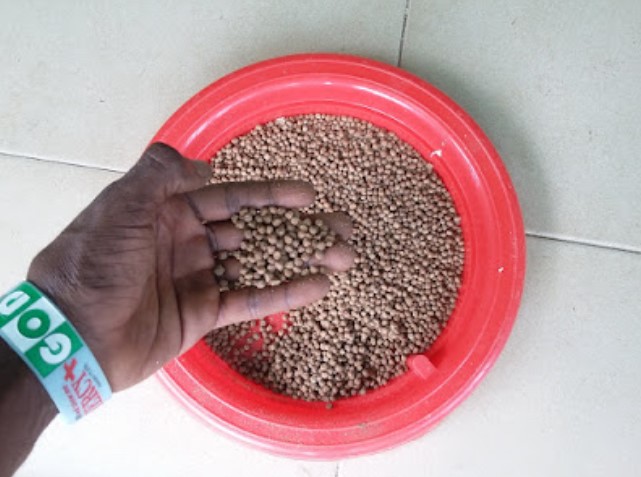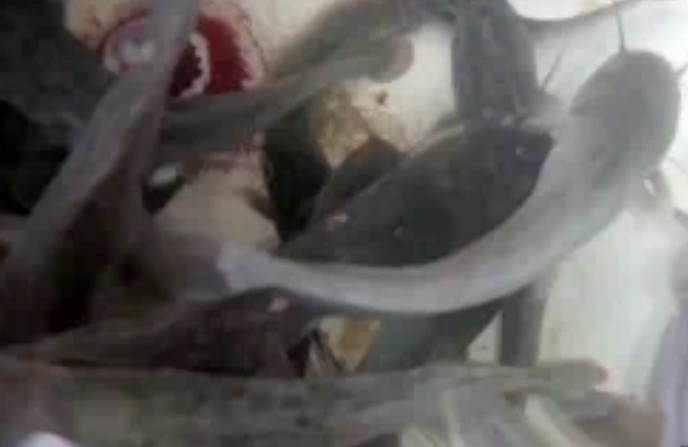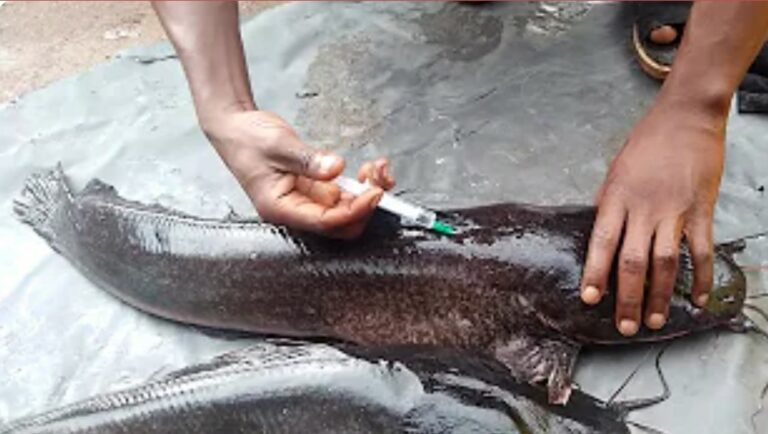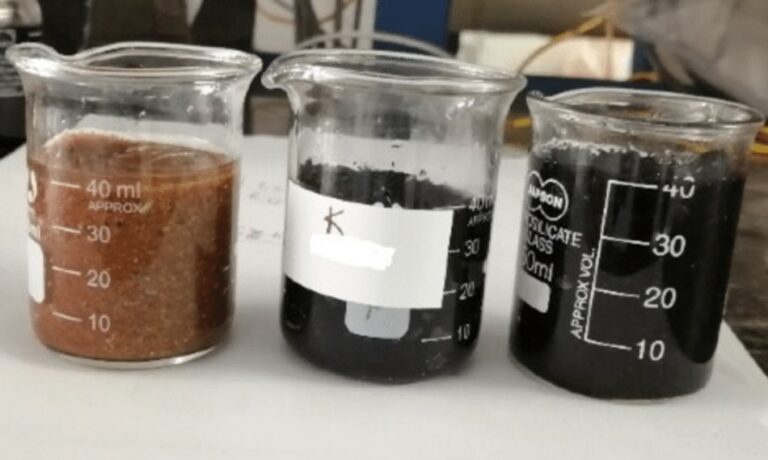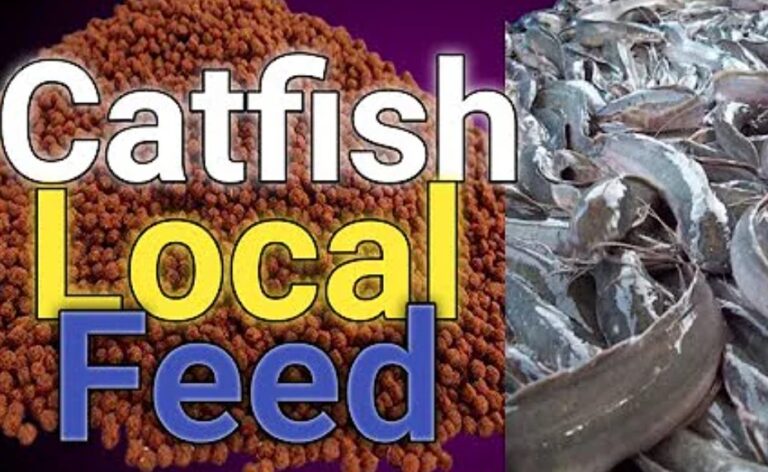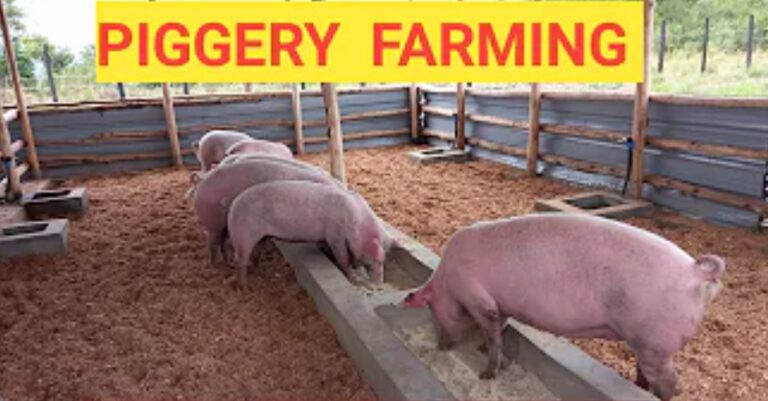Table Size Catfish: Feeding and Management
Feeding and Management Table Size Catfish
This is the rearing of juvenile fish to table size usually weighing 700gm – 1kg on average, 1.5kg and above. This is a highly capital-intensive venture as it requires at least the following
- Production tank (concrete, earthen, plastic, wooden)
- Feed for feeding the fish to table size
- Enough or adequate water availability
- Electricity/generator
- Good quality fingerlings/juvenile
Production tank: This is where the fish shall be cultured to maturity; these can be made with a concrete tank, plastic tank, wooden tank, fibre tank, or earthen pond. A 6ft X 15ft x 4ft concrete tank can successfully raise 1000 fish to maturity. A connection of 6 to 12 tanks of the same dimension, connected through the individual outlets, water is channelled to the concrete tank through a pressure pipe from an overhead water tank or directly from a well, borehole, etc.
Water Quality
Water quality is the first and most important limiting factor in pond fish production. It is also the most difficult production factor to understand, predict and manage. Water is not just where the fish live. Its quality affects feed efficiency, growth rates, the fish’s health, and survival. Most fish kills, disease outbreaks, poor growth, poor feed conversion efficiency, and similar management problems are directly related to poor water quality.
Water quality refers to anything in the water, be it physical, chemical, or biological that affects the production of fish. The objective of pond management is to manage the water quality, and to provide a relatively stress-free environment that meets the physical, chemical, and biological standards for the fish’s normal health and production performance. Water in adequate quantity is the singular most important factor that must be provided, if possible continuously I mean a continuous inlet and outlets system, where the water goes out and fresh water comes into the pond. This helps to extremely reduce the organic loads of the fish pond. Alternatively, the tank can be drained every day, 2 times weekly, weekly as the case indicates, and also the availability of water. However, before any catfish farming operation, good quality water in adequate quantity is must pre-requisite. Water parameters should be monitored for optimum performance.
Also See: Production of Fish Feed from Local Feedstuffs
Within a pond, water quality is a product of:
- The quality of water at the water sources,
- The quality of the pond soils and immediate environment,
- Production technology and management procedures employed, notably those associated with feeding, the maintenance of adequate dissolved oxygen as well as any other chemicals or inputs applied.
Feeding table for catfish
| Fish size (grams) | Feeding Level (% food of body weight/day) | Feed size (mm) |
| 1 – 3 | 15 – 11 | 0.8 – 1.2 |
| 3 -5 | 11 – 9.5 | 1.2 – 1.5 |
| 5 – 10 | 9.5 – 7.5 | 2 |
| 10 – 30 | 5.5 – 4.5 | 2 |
| 50 – 70 | 4.5 – 4 | 3 |
| 70 – 100 | 4 – 3.5 | 3 |
| 100 – 200 | 3.5 – 3 | 4.5 |
| 200 – 300 | 2.5 – 6 | 4.5 |
| 300 – 400 | 2.6 2.3 | 6 |
| 400 – 500 | 2.3 – 2,1 | 6 |
| 500 – 600 | 2.1 1.9 | 6 |
| 600 – 800 | 1.9 – 16 | 10 |
| 800 – 1000 | 1.6 – 1.4 | 10 |
| 1000 – 1300 | 1.6 – 1.4 | 10 |
Feeding Time for Fish
- The feeding frequency is the number of times fish in a pond are fed in a day. The feeding frequency affects the efficiency of feed utilization (i.e. the FCR) so it is important to establish the optimal frequency of feeding to attain the best possible (optimal) FCR and uniform sizes. The following should be taken into account when deciding how frequently fish should be fed each day:
- For optimum growth and feed conversion, each feeding should be about 1% of body weight. However, it is expensive in terms of labour to feed 4 or 5 times per day. In grow-out ponds, feeding 2 or 3 times a day is adequate.
- Slow broadcasting is the recommended way for administering pellets to catfish grow-out ponds. Do not trickle the feed in.
- Proper feeding frequencies reduce starvation and result in more uniform sizes.
- Juvenile catfish need to be fed more frequently than adults because they have higher metabolic rates and their stomachs are too small to hold all the feed they require for a day.
- Catfish from 400g can be fed once a day because at this size the stomach can hold enough food for the day. At this stage, feeding all the fish at the same time once a day results in more uniform growth rates because the greedy ones will still be full when there is still food around in the pond. This provides a good chance for the smaller fish to come and feed, hence, they also grow.
- The feed administered as a meal should be consumed within the first 15 minutes of the feeding if you are using the floating feed. If it is not, reduce the amount given to match how much can actually be consumed. This is a bit tricky with sinking feed but it is possible

The fish’s feeding response depends on the:
- Suitability of the feed. The feed’s appearance, smell, texture/feel, and taste also influence the fish’s appetite. The more palatable the feed is, the better the feed response should be
- Culture (Water) Environment: The most important water quality parameters that affect feeding response in ponds are water temperature and dissolved oxygen. The warmer the water and the more dissolved oxygen it has, the more active the fish will be and the better their feed consumption and FCR.
- Other Stressors, such as pollutants in water, other water quality variables (notably of ammonia and pH), handling, and social interactions also affect the fish’s appetite. When fish are stressed, their appetite drops quickly.
